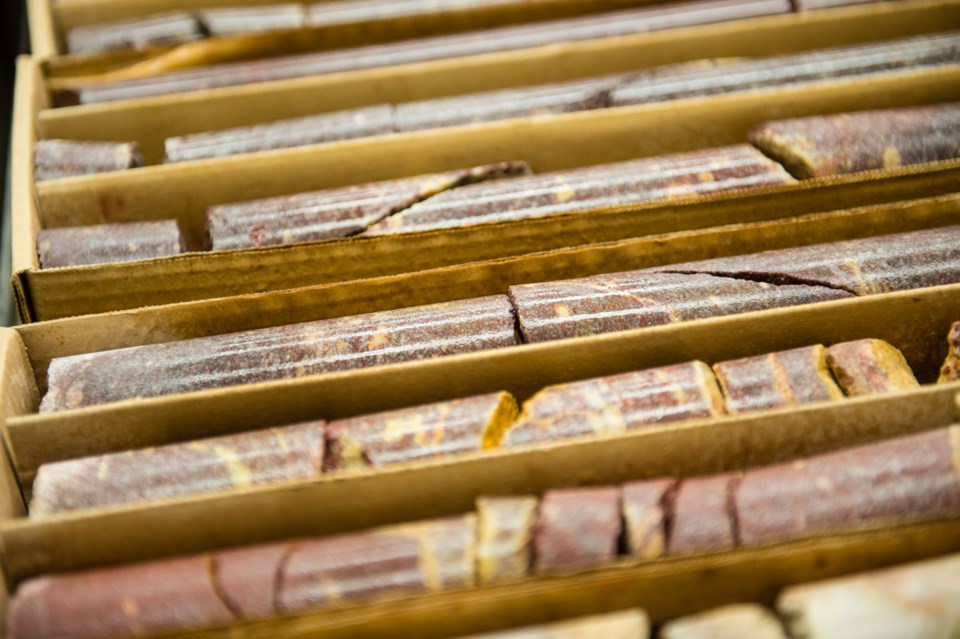Back in January, my phone rang.
On the other end of the phone was Melinda Yurkowski, assistance chief geologist, petroleum geology, who looks after the sedimentary division of the Saskatchewan Geological Survey. It turns out that this year would mark the 70th anniversary of the Survey. She asked if I was interested in doing a story on it. I told her I would focus an edition on it.
Melinda is one of my favourite people in this industry. She’s gregarious, with the widest smile you can put on a human face. Her countenance often has that very smile on it, accompanied by her characteristic chuckle. She and I will sometimes sit together at conferences for lunch, and every time I have posed even the oddest question to her, she has never failed to come back with an answer. That might have been about natural gas production at Kamsack eons ago, or helium in southwest Saskatchewan today. How could I possibly turn her down?
Over the years I’ve gotten to know a number of the people who work with Melinda at the core lab, properly termed the Saskatchewan Subsurface Geological Laboratory. It’s been home, since 1958, to Saskatchewan’s priceless repository of core, drill cuttings, and well logs. The warehouse in the back has been expanded numerous times. It looks, in a way, like the ending from Raiders of the Lost Ark,except much more tidy and orderly. The boxes of core are marked with the names of many companies who have come and gone, and yet the core, and the geology, remains.
I like to joke that I write about Melinda’s crew of geologists as “rock stars,” because that’s what they are, and I am their biggest fan. The Grateful Dead had their Deadheads. The Survey has me. Rock on, dude.
Of all the engineering physics, math, chemistry and materials classes I took in two years of an incomplete engineering program, the one class I use, today, on an almost daily basis, was geological engineering 110. I sometimes wonder what it would have been like if I had completed my degree, and not as a mechanical engineer, but as a geological engineer.
It would have been interesting work, but work punctuated by the poverty line every time there’s a downturn in the industry. Geology gets the axe really hard when there’s a downturn in the industry, and this downturn is one for the record books.
But I digress. One of the stories Melinda suggested was Dr. Jim Christopher, her good friend whose office is just a few doors down from her. I knew very little about him before, and had occasionally seen him at the lab, but I never really knew much about him. That was until I spent a whole morning with him in February, talking about his life’s work.
In all the years of my journalism career, talking with Dr. Christopher has got to be one of the top 10 highlights. A more fascinating man will be hard to find.
Dr. Christopher still hangs out at the core lab pretty much every day. He likes to go for a beer on Friday with friends. He was 92 when I spoke to him, and just after this paper goes to press, he will be 93. He still works diligently at his geological research, despite having retired 31 years ago.
Let me be clear – other than an initial contract for a couple years, and a few contracts from industry, he has largely worked for free for about three decades, contributing greatly to the knowledge of this province’s geology. He spent 15 years on one gargantuan study on the Mannville, post-retirement. That was completed 15 years ago!
As we talked about his early work, numbers started clicking off in my head. Those numbers were the estimated billions of dollars of investment that were built on his geological work.
Having come to Saskatchewan right after getting his doctorate in Ohio State University, he arrived here in 1959 and went to work on the Bakken. This man actually named the Torquay formation, where, just a few weeks before the interview, I had seen nine drilling rigs working within a singular township. His work on the Bakken, decades ago, was important down the road when the boom hit.
He also did similar work on the Jurassic in the Shaunavon play, another substantial play for this province. I don’t know how many billions have been invested in these regions, but I’m certain it is in the tens of billions. That’s money that had fed families, paid for doctors and highways, for generations.
Dr. Gary Delaney, the chief geologist of Saskatchewan, likes to say, “It all starts with the rocks.” And he’s absolutely right. We would not have any sort of petroleum industry in Saskatchewan today were it not for the geologists who squint through the loops hanging around their neck, trying to determine if this rock or that rock will produce billions in oil, or a dry hole. They sit in shacks on wellsites, analyzing the drill cuttings brought to them by roughnecks in muddy cups.��
The geologists are the true rock stars of this industry. I was glad I got to spend a morning with their Elvis, or perhaps more accurately, Ray Charles. ����
��
Brian Zinchuk is editor of Pipeline News. He can be reached at [email protected].




